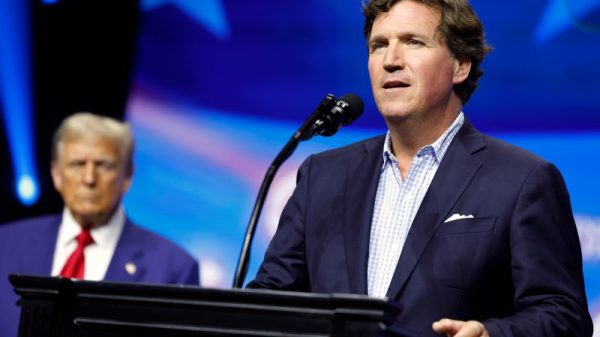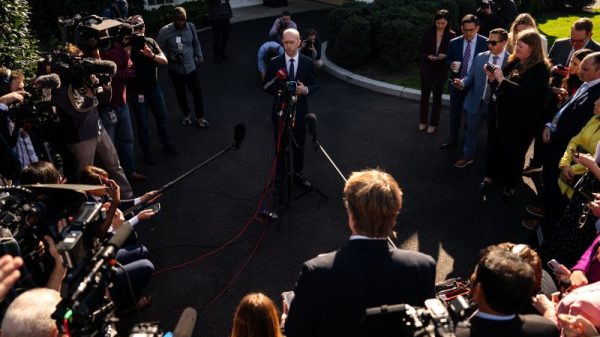One year after a record run on quarterbacks in the NFL draft, the prevailing theme around this year’s crop of college passers is uncertainty.
While Cam Ward appears to be solidifying his case to be the Tennessee Titans’ pick with the No. 1 overall selection, the upcoming group at the position hasn’t sparked the same excitement that Caleb Williams, Jayden Daniels and the four other signal-callers taken in the top 12 picks ignited last year. And in what’s viewed as a lackluster year for top-end talent behind center, some teams might be wary about the available choices – at least when the price tag is a premium pick.
Still, this class also has a chance to split from last year’s on Day 2 and beyond, with several developmental options in the mix after the 2024 group had a record 137 selections between the last first-round quarterback selection (Bo Nix) and the next pick at the position (Spencer Rattler in the fifth round).
Here’s USA TODAY Sports’ ranking of the top 10 quarterbacks available in the 2025 NFL draft:
1. Cam Ward, Miami (Fla.)
Between his attacking mentality and an embrace of off-schedule plays, Ward again and again bets on himself to defy the odds. Maybe that should come as no surprise for a player who began his career at the Football Championship Subdivision level with Incarnate Word before transferring to Washington State and again to Miami. But even when his confidence veers into the territory of hubris, Ward more often than not finds a way to cash in on his sizable gambles.
At the next level, his devil-may-care approach might have to be dialed back at least a little bit, with defenses sure to test whether he’ll take the easier wins that he so far has frequently passed up. But given his comfort reading the entire field, making adjustments at the line of scrimmage and operating from within the pocket, Ward is far more than just an improvisational aficionado. So long as he is paired with a coaching staff prepared to ride out some early turbulence stemming from his playing style, Ward sizes up as an exciting offensive catalyst capable of elevating any group he joins.
2. Shedeur Sanders, Colorado
From the start of his career, Sanders has been defined by his ability to navigate pressure. The son of Hall of Famer Deion Sanders – as well as the coach’s star pupil – has conquered a singular set of challenges, as he delivered both Jackson State and Colorado to new heights above even his substantial celebrity. Through it all, he has exhibited a never-say-die mentality that has become both his foremost strength and most pressing concern.
Sanders’ toughness and confidence are unimpeachable after a career marked by insufficient protection. Yet while the 6-2, 212-pounder frequently overcame an unrelenting onslaught of pass rushers, he often exacerbated the issue by holding onto the ball too long and drifting backward in the pocket. With his margin of error getting considerably thinner at the next level, he will have to fine-tune his internal clock, especially given that he might not be able to replicate the off-platform and out-of-structure throws he grew accustomed to making for the Buffaloes. But as a precise pocket passer, Sanders could thrive as an efficient distributor if he lands in the right offense with sufficient support.
3. Jaxson Dart, Mississippi
As the triggerman for Lane Kiffin’s offense, Dart enjoyed a steady ascension over three years with Mississippi after transferring from USC. While an attack that affords plenty of easy decisions has left questions about how the 6-2, 223-pounder will adapt to much more challenging circumstances, Dart established a strong track record for executing within structure and making plays as a runner when things broke down.
Most of Dart’s physical attributes are merely solid rather than spectacular, and his inexperience throwing with anticipation looms as a potential stumbling block. But as a signal-caller who thrives attacking defenses in the intermediate level and over the middle, he can carve out a place for himself in an offense that accentuates his strengths.
4. Jalen Milroe, Alabama
As both a runner and deep thrower, Milroe stands out as this class’ pre-eminent big-play threat. The 6-2, 217-pounder is something to behold when he’s fully in sync, as he’s equally comfortable uncorking passes downfield as he is taking off for a long gain with his legs. But there’s still a wild variance in his play even from snap to snap, as the transition from Nick Saban’s staff to a Kalen DeBoer-orchestrated offense revealed Milroe still has plenty of work to do as a pocket passer.
Adapting to the short-to-intermediate game remains a challenge for Milroe, who too often rips passes with little regard for touch or timing. And after throwing for just four touchdowns and eight interceptions in his final seven regular-season games in 2024, he has to account for critical lapses in his footwork and decision-making. While his running ability should immediately translate to the next level and afford him some flexibility as he acclimates to an even faster game, Milroe can’t be counted on as much more than a developmental signal-caller early in his career unless he irons out his issues in short order.
5. Tyler Shough, Louisville
At 6-5 and 219 pounds, Shough is comfortable whipping throws or delivering touch strikes. He also can manipulate coverages more comfortably than many of his peers.
What’s the rub, then, for a Day 2 prospect with several key first-round traits? For one, Shough only has one year of consistent production in a nomadic career that featured him spending three years apiece at Oregon and Texas Tech before he landed at Louisville. Injuries also factor greatly into his evaluation, as he twice suffered a broken collarbone and then broke his fibula. And for a player who will turn 26 as a rookie, there’s significant concern about whether he still has room to grow and stick as a starter.
6. Quinn Ewers, Texas
The No. 1 overall recruit was a three-year starter who twice led the Longhorns to the College Football Playoff after transferring from Ohio State, but he never truly became the scintillating passer many envisioned. There were flashes of promise, to be sure, with his rapid release and deft touch on display at times in a promising 2023 campaign in which he completed 69% of his passes. But despite tossing 31 touchdowns last season, Ewers didn’t make the leap many envisioned. The 6-2, 214-pounder still gets stuck on his first read far too often, and he’s frequently robotic rather than instinctive in the face of pressure. Though his arm strength and ability to deliver off platform might have been his calling cards in high school, he’s not strong enough in either area to compensate for shortcomings with his footwork and decision-making,
7. Kyle McCord, Syracuse
For better or worse, every play has the potential to be an adventure with McCord, who’s never afraid to let it rip. The aggression has served him well in spots, with the Ohio State transfer reviving his career with 34 touchdown passes in his lone season at Syracuse. But his 12 interceptions highlighted that he often paid for his willingness to throw into tight coverage, and he lacks the upper-echelon arm strength to extend this style to the pros. His best bet to have a shot as a starter somewhere down the line might be to rely more on his touch passing while he also learns to manipulate coverages better.
8. Will Howard, Ohio State
In leading the Buckeyes to the national championship last season, Howard was tasked with getting the ball in the hands of Ohio State’s myriad playmakers while generating just enough on his own. Still, the Kansas State transfer repeatedly got the job done. Howard can mostly be described as passable in many elements of his game, including his arm strength and field vision. But at 6-4 and 243 pounds with admirable toughness, he could be a trustworthy second-stringer.
9. Dillon Gabriel, Oregon
A 5-11, 205-pound lefty who starred for three different schools, Gabriel is far from the picture of a typical quarterback prospect. But the Heisman Trophy finalist manages to mitigate some concerns about his physical limitations by operating quickly and with composure from the pocket. Attacking over the middle of the field is bound to be a problem for Gabriel, but he could fit as a backup for an offense that prizes his touch, anticipation and intelligence.
10. Max Brosmer, Minnesota
There’s nothing dazzling about the 6-2, 217-pound transfer from New Hampshire, who won’t threaten defenses deep or make many things happen on his own, particularly when a play breaks down. But he’s savvy and clean in his approach with a knack for making good decisions. That skill set could allow him to hang for a while as a backup.




























